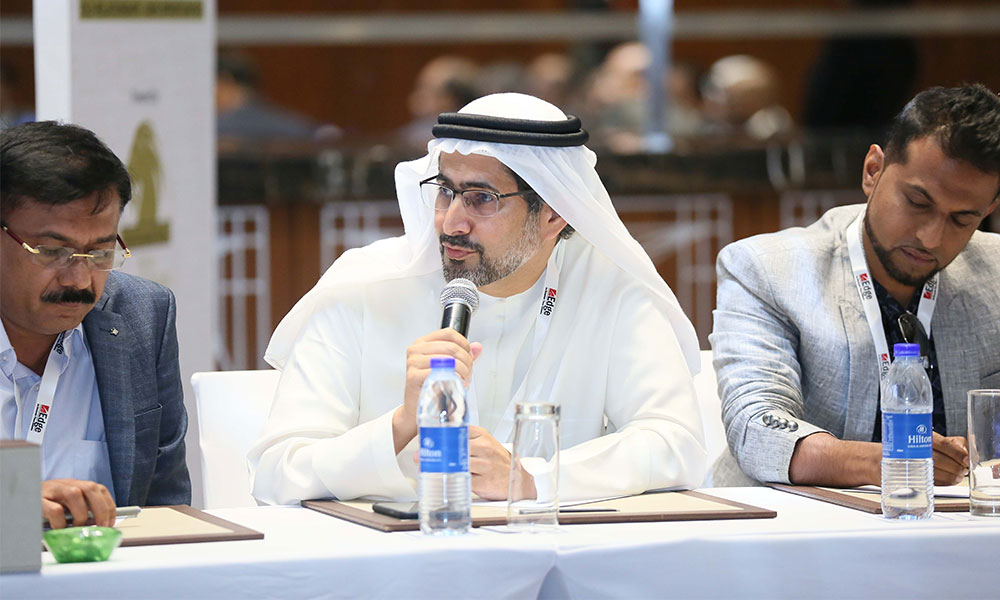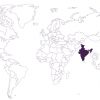The Economic Times India Leadership Council global outreach program in Dubai, UAE, saw leaders from India and the UAE chart a roadmap for mutual growth and prosperity
DUBAI – October 2, 2017: India and UAE face an array of challenges, all of which can be overcome with the will to conquer and effective leadership. The Economic Times India Leadership Council brought together eminent leaders from a cross-section of industries in India to deliberate with key government officials on vital issues pertaining to speeding up of the investment mechanism in key sectors. H.E. Mohammed Sharaf, Assistant Foreign Minister for Economic and Trade Affairs, UAE, took on a pivotal role in presiding over the discussions with a selection of eminent Indian business leaders.
We live in dynamic times and given the current state of flux in West Asia, strong, joint leadership is needed from both countries to drive prosperity, peace and stability in the region. H.E. Mohammed Sharaf, Assistant Foreign Minister for Economic and Trade Affairs, UAE, offered his thoughts on the significance of India – UAE ties in the region, saying, “The interconnectivity of the UAE and the Indian economies is evidenced by the $35.8 billion non-oil trade and $6.9 billion oil trade in 2016. With this volume of bilateral trade, India remains as the second largest market for UAE’s oil and non-oil exports, while the UAE represents the second largest market for Indian goods worldwide. The maritime sector, which includes ports, shipping and blue economy, is one example of the not fully realized potential that can be targeted by UAE-India bilateral initiatives,” he added.
As age-old partners, India and the UAE’s historically strong bilateral relations are borne out by India being UAE’s top foreign trade partner. In recent times though, the two countries have taken their partnership to a more strategic level, with co-operations expected in diverse, previously unexplored areas, such as defense and infrastructure. H.E. Jamal Saif Al Jarwan, Secretary- General, UAEIIC, shed some light on the scope for India and the UAE working closer together than ever, saying, “The UAE has come out with a new concept of investing government money in the private sector. As far as UAE’s investments abroad go, they have been intensified. India with its large pool of human resources and UAE with its infrastructure strength means that there are natural areas for enhanced strength and scope to take trade and other areas of cooperation between the two nations to phenomenal heights.”
“The UAE has come out with a new concept of investing government money in the private sector. As far as UAE’s investments abroad go, they have been intensified. India with its large pool of human resources and UAE with its infrastructure strength means that there are natural areas for enhanced strength and scope to take trade and other areas of cooperation between the two nations to phenomenal heights”
The discussions focused on the advances being made in Indian infrastructure, especially in light of the UAE instituting the $75 billion UAE-India Infrastructure Investment Fund to support investments over a 10-year period in India’s infrastructure sector. However, H.E. Jamal Saif Al Jarwan opined that the UAE would focus on investing in brown field projects over green field projects since the latter has large gestation periods. With its shorter turn-around times, brown field projects were deemed to be far more viable and evinced greater attention from UAE investors.
India’s infrastructure has gone through a sea change in the last decade with much more in the offing, and Sunil Kanoria, Co-Founder and Vice Chairman, SREI Infrastructure, laid out his perspective on the developments in the sector, stating that the opportunity is ripe for investors to step in. “The changes that have happened in the last 2-3 years structurally will help create a much better platform for the future. There are multiple challenges being overcome, and the biggest advantage for investors in India is in brown-field assets, because existing assets have been built up and the largest investment in infrastructure has happened in India. The private sector has invested heavily in infrastructure, to the tune of USD $300 million, with a lot more potential awaiting. India has matured through the challenges it faced, and it can now serve as a development model for the world. Now that the structures have been put in place, there is a great opportunity.”
With India’s population more vast than ever, there is also a real need to overhaul India’s existing infrastructure to ensure it caters to the growing demands born out of our evolving lifestyles. This is equally true across the urban and rural landscape, with India’s urban health centres catering to more patients than ever. Thus, an apportioning of this medical care across tier 1, 2 and 3 cities would be prudent, as explained by Dr. Naresh Trehan, Founder & CMD, Medanta Medicity. “As a nation, when planning, we don’t drill down deep enough to see what the problem would be. However, by leveraging the PPP model and opening hospitals in tier 2 and tier 3 cities in India such as Patna and Ranchi, we can cater to a larger slice of the population. The idea underlying this move is that these cities could serve as nodal hubs where a large catchment area could get their medical needs met in world-class facilities without having to travel to cities, thus improving access to better healthcare for all. With time, the PPP model will be perfected further still to deliver better value for all stakeholders.”
Hand in hand with the need to deliver better healthcare goes the need to feed the healthy lifestyles that they are enabling. As Anshu Budhraja, CEO, Amway India, pointed out, it’s everyone’s dream to live a quality and energetic life with optimal vitality, physically and mentally, and raising awareness on how to do so will help make the world a better place for all. “The neutraceutical industry is about USD$ 200 billion globally, and a couple of months back when we came here, we signed a deal to get 4000 Indians to Dubai as part of the largest incentive trips we are doing to the UAE. We have had some enlightening and engaging discussions with government authorities, and look forward to playing our role in deepening relations with the UAE.”
Commenting on the global outreach program of the Indian Leadership Council, Mr. Deepak Lamba, President of Times Strategic Solutions, said, “We are extremely grateful to Their Excellencies Jamal Saif Al Jarwan and Mohammed Sharaf for their support and presence while engaging with eminent Indian business leaders from the India Leadership Council. It is the time for a paradigm shift, one that brings together leaders with a shared vision and value system to make a difference, and the Council is an earnest step in that direction.”
As boundaries shrink and businesses go global, the time is ripe for the coming together of business leaders that can blaze a trail of excellence in this era of economic complexity and international interconnectivity. India needs a leadership regime that is committed to growth and progress for all, and The Economic Times India Leadership Council hopes to be the harbinger of this change.







